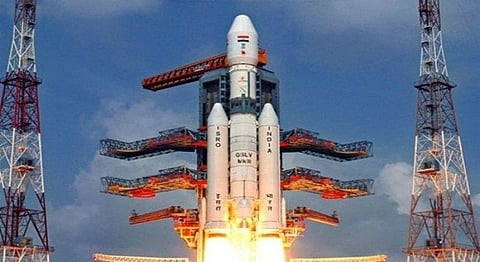
- HOMEGROWN WORLD
- #HGCREATORS
- #HGEXPLORE
- #HGVOICES
- #HGSHOP
- CAREERS
- ABOUT US
- CONTACT US

Countdowns usually last around ten seconds, but the Indian Space Research Organisation (ISRO) had a rather lengthy one on their hands this Sunday. After a painfully long 25 and half hour launch procedure, ISRO launched the country’s heaviest rocket, Mark III, along with a communications satellite called GSAT-19, on Monday evening. While our boy here sounds like the wealthy descendant of an Anglo-Indian family, the Geosynchronous Satellite Launch Vehicle-Mark III (or GSLV-Mk III, for short) weighs over 640 tonnes and stands at a height of 142.49 ft. And the communications satellite was nothing short of light either, with a weight of 3,136 kg - the heaviest to be lifted by any Indian rocket till this day.
The blast off happened from India’s launch pad at Satish Dhawan Space Centre, Andhra Pradesh and was successfully launched into an altitude of 179km above the Earth after just over 16 minutes into the flight. And this is only a part of the reason why this rocket launch was claimed a “game-changer”. The rocket’s principle engines were designed by indigenous scientists, further reflecting a huge step towards a self-reliant space programme. ISRO currently launches all satellites above 2 tonnes on European rockets for an incredible fee. But this project immensely facilitates India in gaining a larger share of global space market and reduce international dependency.
With ISRO’s continuous streak of innovations and progress in technology, India is well on its way to becoming a serious stake-holder in the international space-market, with technological independence and sustainability in the coming years.
You can watch the launch here.
If you like this piece, we suggest you read:
